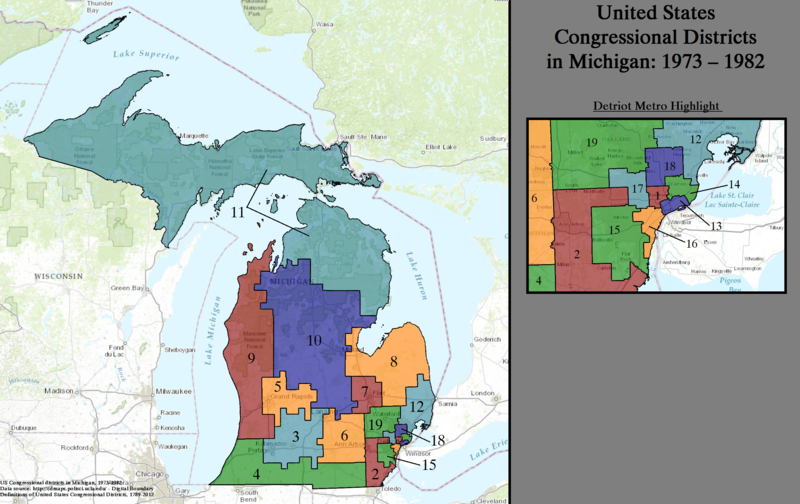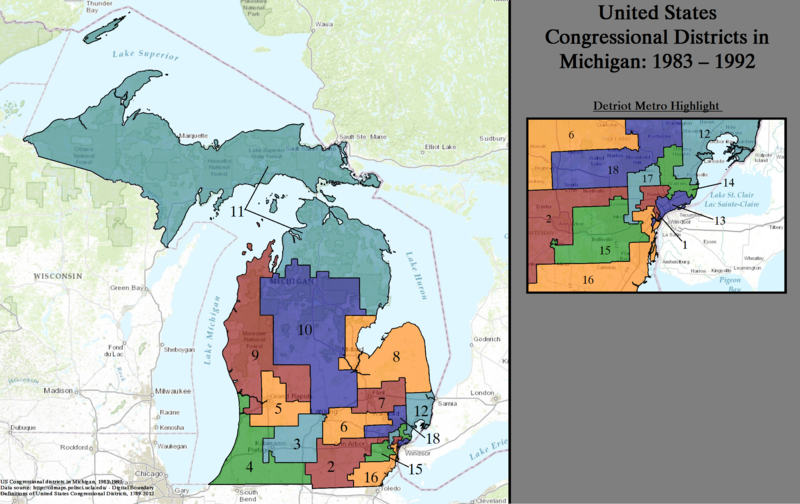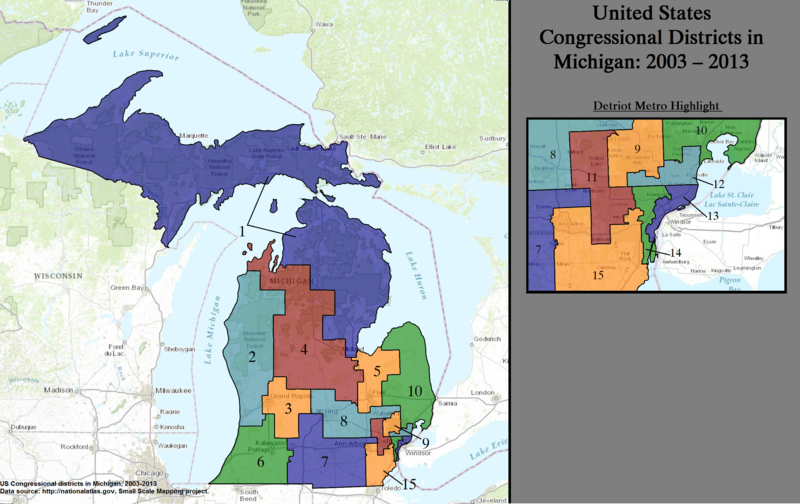Michigan's congressional districts: Difference between revisions
→Current districts and representatives: whoops, not like that. but it's squished? |
→Current districts and representatives: District 13 is D+32, not D+33. |
||
| Line 104: | Line 104: | ||
| [[File:Rashida Tlaib 116th Congress.jpg|100px]] [[Rashida Tlaib]] ([[Democratic Party (United States)|D]]-[[Detroit]]) |
| [[File:Rashida Tlaib 116th Congress.jpg|100px]] [[Rashida Tlaib]] ([[Democratic Party (United States)|D]]-[[Detroit]]) |
||
| {{party shading/Democratic}} | Democratic |
| {{party shading/Democratic}} | Democratic |
||
| {{party shading/Democratic}} | D+ |
| {{party shading/Democratic}} | D+32 |
||
| January 3, 2019 – present |
| January 3, 2019 – present |
||
| [[File:Michigan US Congressional District 13 (since 2013).tif|400px]] |
| [[File:Michigan US Congressional District 13 (since 2013).tif|400px]] |
||
Revision as of 19:35, 13 February 2019

Michigan is divided into 14 congressional districts, each represented by a member of the United States House of Representatives.[2]
The districts are currently represented in the 116th United States Congress by 7 Democrats and 7 Republicans.
Current districts and representatives
List of members of the Michigan United States House delegation, their time in office, district maps, and the districts' political ratings according to the CPVI. The delegation has a total of 14 members, 7 Republicans and 7 Democrats.
"Time in office" reflects each member's time since becoming a U.S. Representative, not the member's time since becoming a representative for his current district; redistricting commonly results in a district being moved elsewhere in the state and its representative beginning to represent a different district in the same location.
| District | Representative | Party | CPVI | Time in office | District map |
|---|---|---|---|---|---|
| 1st |  Jack Bergman (R-Watersmeet) Jack Bergman (R-Watersmeet)
|
Republican | R+9 | January 3, 2017 – present | 
|
| 2nd |  Bill Huizenga (R-Zeeland) Bill Huizenga (R-Zeeland)
|
Republican | R+9 | January 3, 2011 – present | 
|
| 3rd |  Justin Amash (R-Cascade Township) Justin Amash (R-Cascade Township)
|
Republican | R+6 | January 3, 2011 – present | 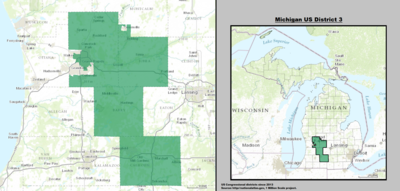
|
| 4th | 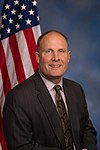 John Moolenaar (R-Midland) John Moolenaar (R-Midland)
|
Republican | R+10 | January 3, 2015 – present | 
|
| 5th |  Dan Kildee (D-Flint Township) Dan Kildee (D-Flint Township)
|
Democratic | D+5 | January 3, 2013 – present | 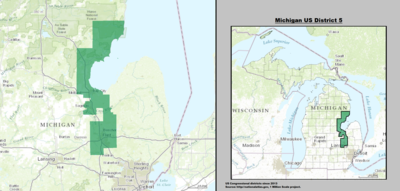
|
| 6th |  Fred Upton (R-St. Joseph) Fred Upton (R-St. Joseph)
|
Republican | R+4 | January 3, 1987 – present | 
|
| 7th |  Tim Walberg (R-Tipton) Tim Walberg (R-Tipton)
|
Republican | R+7 | January 3, 2011 – present | 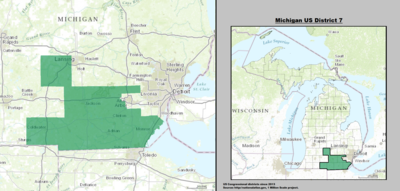
|
| 8th |  Elissa Slotkin (D-Holly) Elissa Slotkin (D-Holly)
|
Democratic | R+4 | January 3, 2019 – present | 
|
| 9th |  Andy Levin (D-Bloomfield Township) Andy Levin (D-Bloomfield Township)
|
Democratic | D+4 | January 3, 2019 – present | 
|
| 10th |  Paul Mitchell (R-Dryden Township) Paul Mitchell (R-Dryden Township)
|
Republican | R+13 | January 3, 2017 – present | 
|
| 11th |  Haley Stevens (D-Rochester Hills) Haley Stevens (D-Rochester Hills)
|
Democratic | R+4 | January 3, 2019 – present | 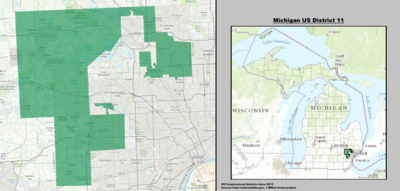
|
| 12th |  Debbie Dingell (D-Dearborn) Debbie Dingell (D-Dearborn)
|
Democratic | D+14 | January 3, 2015 – present | 
|
| 13th |  Rashida Tlaib (D-Detroit) Rashida Tlaib (D-Detroit)
|
Democratic | D+32 | January 3, 2019 – present | 
|
| 14th | 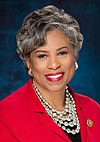 Brenda Lawrence (D-Southfield) Brenda Lawrence (D-Southfield)
|
Democratic | D+30 | January 3, 2015 – present | 
|
Historical district boundaries
Below is a table of United States congressional district boundary maps for the State of Michigan, presented chronologically forward.[3] All redistricting events that took place in Michigan in the decades between 1973 and 2013 are shown.
Obsolete districts
- Michigan's at-large congressional district
- Michigan's 15th congressional district
- Michigan's 16th congressional district
- Michigan's 17th congressional district
- Michigan's 18th congressional district
- Michigan's 19th congressional district
See also
References
- ^ "The national atlas". nationalatlas.gov. Archived from the original on February 22, 2014. Retrieved February 22, 2014.
{{cite web}}: Unknown parameter|deadurl=ignored (|url-status=suggested) (help) - ^ "Directory of Representatives". The United States House of Representatives. Retrieved 2013-03-08.
- ^ "Digital Boundary Definitions of United States Congressional Districts, 1789–2012". Retrieved October 18, 2014.

